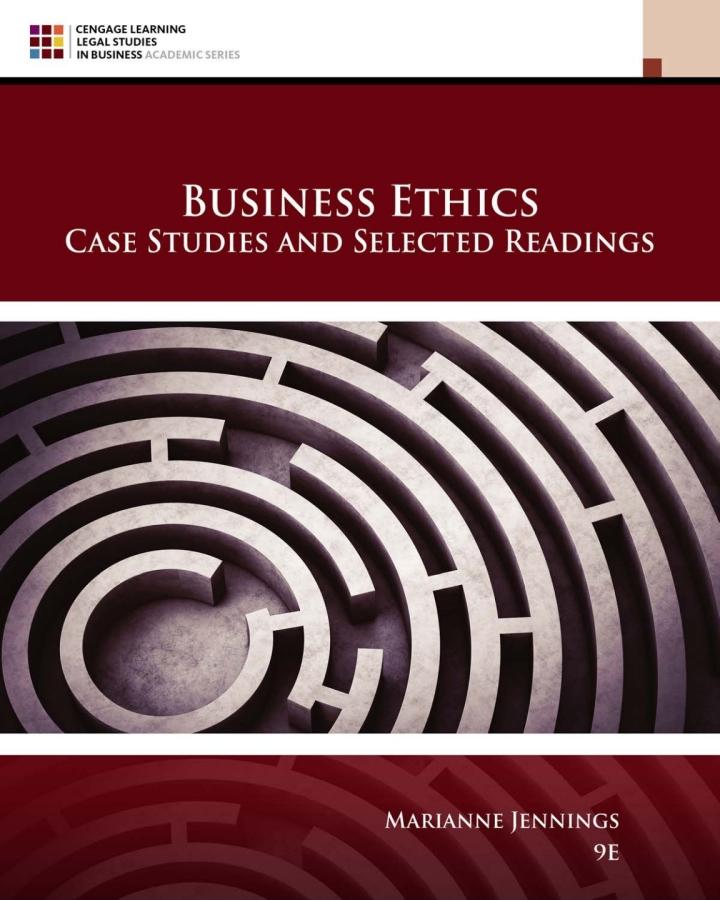Beech-Nut was heavily in debt, had only (15 %) of the baby food market, and was operating
Question:
Beech-Nut was heavily in debt, had only \(15 \%\) of the baby food market, and was operating out of a badly maintained 80-year-old plant in Canajoharie, New York. Creditors and debt were growing. Beech-Nut needed to keep its costs down, its production up, and increase its market share. In 1977, Beech-Nut made a contract with Interjuice Trading Corporation (the Universal Juice Corporation) to buy its apple juice concentrate. The contract was a lifesaver for Beech-Nut because Interjuice's prices were \(20 \%\) below market, and apple concentrate was used as a base or sweetener in \(30 \%\) of Beech-Nut's baby food products.
Dr. Jerome J. LiCari was the director of research and development for Beech-Nut Nutrition Corporation. Beech-Nut still had the low-cost Interjuice contract, but LiCari was worried. There were rumors of adulteration (the addition or substituted use of inferior substances in a product) flying about in the apple juice industry. Chemists in LiCari's department were suspicious, but they did not yet have tests that could prove the adulteration.
In October 1978, Dr. LiCari learned from other sources that the concentrate might be made of syrups and edible substances that are much cheaper than apples. LiCari reported what he had learned to John Lavery, Beech-Nut's vice president for operations. Lavery's job included management of the purchasing and processing of apple juice concentrates.
Concerned, Lavery sent two employees to inspect Universal's blending operation. What the employees found was only a warehouse without any blending facility. Lavery did nothing more and did not ask about where Interjuice's blending operation was or whether he could have it inspected. Instead, he had Universal officers sign a "hold harmless" agreement, an addendum to the purchase contract that was intended to protect Beech-Nut if any legal claims or suits related to the juice resulted.
Under federal law, a company can sell a product that tastes like apple juice but is not really apple juice so long as the label discloses that it is made from syrups, sweeteners, and flavors. However, Beech-Nut's labels indicated that there was apple product in its apple juice and apple sweetener in the other products in which the concentrate was used, such as the baby fruits, where it provided a sweeter taste. Selling products labeled as apple juice or as containing apple product when they are in fact made with syrups and flavorings is a federal felony. Lavery wanted the hold-harmless agreement for protection against any claims that might be filed under these laws.
During this time, LiCari and his staff were able to develop some tests that did detect the presence of corn starch and other substances in the apple concentrate that were consistent with the composition of adulterated juice. LiCari continued to tell Lavery that he was concerned about the quality of the concentrate supplied by Universal. LiCari told Lavery that if a supplier were willing to adulterate concentrate in the first place, it would likely have little compunction about continuing to supply adulterated product even after signing a hold-harmless document.
Lavery reminded LiCari that Universal's price to Beech-Nut for the concentrate was 50 cents to a dollar per gallon below the price charged by Beech-Nut's previous supplier. He also reminded LiCari of the tremendous economic pressure under which the company was operating. The revenue from Beech-Nut's apple juice was \(\$ 60\) million between 1977 and 1982. Lavery told LiCari that he would not change suppliers unless LiCari brought him tests that would "prove in a court of law that the concentrate was adulterated." He also told LiCari that any further testing of the product was to be a low item on his list of work assignments and priorities...............
Discussion Questions 1. No one was ever made ill or harmed by the fake apple juice. Was LiCari overreacting?
2. Did LiCari follow the lines of authority in his efforts? Is this important for a whistleblower? Why?
3. What pressures contributed to Beech-Nut's unwillingness to switch suppliers?
4. Using the various models for analysis of ethical dilemmas that you have learned, point out the things that Lavery, Hoyvald, and others in the company failed to consider as they refused to deal with the Interjuice problem.
5. Why did LiCari feel he had to leave Beech-Nut? Why did LiCari write anonymously to the FDA?
6. Is it troublesome that Hoyvald and Lavery escaped sentences on a technicality? Is the sentence too light?
7. Why do you think Hoyvald and the others thought they could get away with the adulterated juice? Why did they play the "cat-and-mouse" game with the FDA? What principles about ethics have you learned that might have helped them analyze their situation more carefully and clearly? Are there some ideas for your credo from both their decisions and LiCari's actions?
8. Beech-Nut's market share went from \(19.1 \%\) of the market to \(15.8 \%\), where it has hovered ever since. Why? What were the costs of Beech-Nut's fake apple juice and its "cat-and-mouse game"? Do you think consumers still remember this conduct?
Step by Step Answer:

Business Ethics Case Studies And Selected Readings
ISBN: 9780357453865
9th Edition
Authors: Marianne M. Jennings





